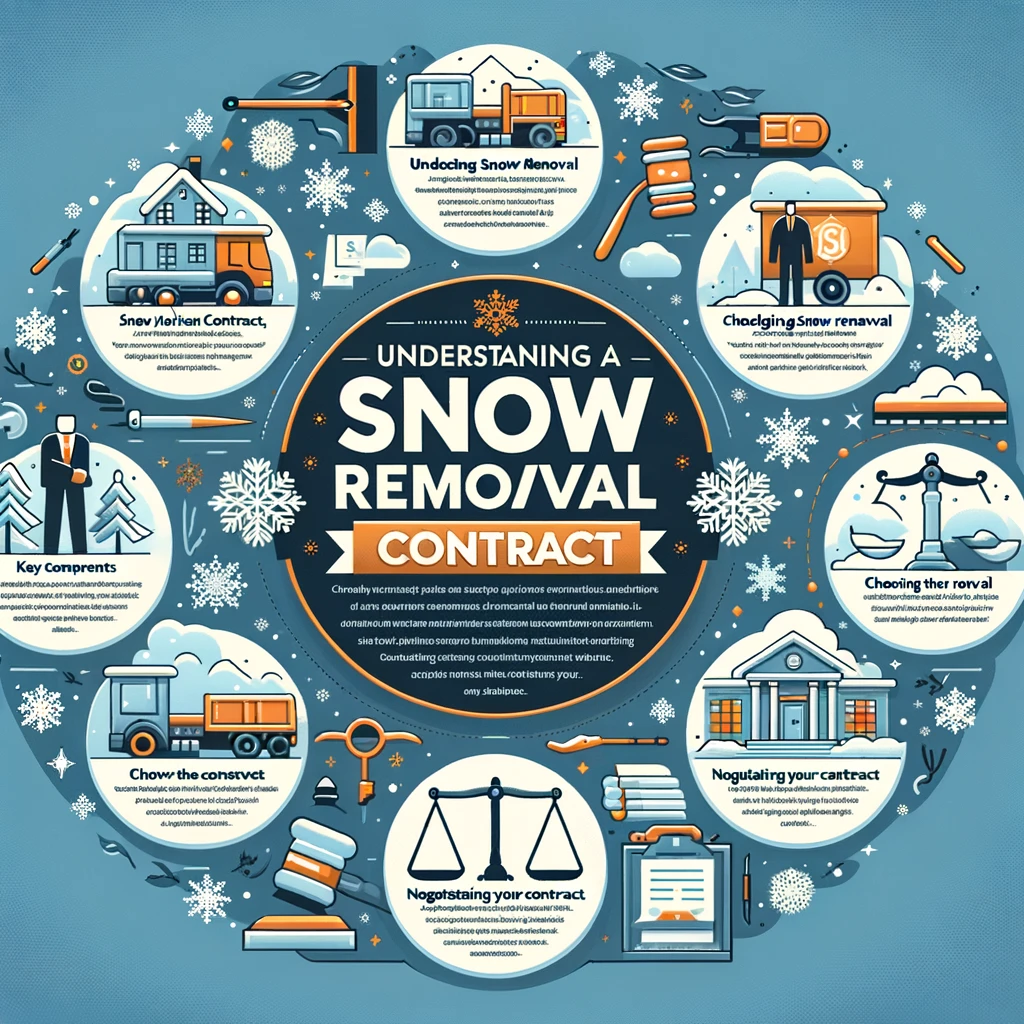The Ultimate Guide to Snow Removal Contracts: Everything You Need to Know
As winter approaches, businesses and homeowners alike start to consider the logistics of snow removal. In regions where snowfall significantly impacts daily life, securing a reliable snow removal contract becomes crucial. This comprehensive guide delves into the intricacies of snow removal contracts, offering insights and advice to ensure you're well-prepared for the winter months. We will incorporate authoritative resources from .gov, .edu, and Wikipedia to enhance the credibility of our information.

Understanding Snow Removal Contracts
A snow removal contract is a legally binding agreement between a property owner and a service provider, outlining the terms and conditions for snow and ice removal. These contracts are pivotal in ensuring timely and efficient snow clearing, minimizing the risk of accidents due to slippery conditions, and ensuring compliance with local ordinances.
For general information on contracts and their legal implications, Cornell Law School's Legal Information Institute provides a wealth of knowledge.
Key Components of a Snow Removal Contract
A comprehensive snow removal contract should address the following:
Services Provided: Detailed description of the services, including snow plowing, shoveling, salting, and de-icing methods.
Trigger Depth: The minimum snow accumulation before services commence.
Service Areas: Specific locations to be cleared, such as driveways, parking lots, sidewalks, and entryways.
Response Time: Timeframe within which the service provider will begin snow removal after a snowfall event.
Payment Structure: Fixed fee, per event, or seasonal rate, including any additional charges for extraordinary snowfall events.
Term of Contract: Duration of the service agreement, typically specified by months or the winter season.
Liability and Insurance: Clauses specifying the insurance coverage and liability for damages during snow removal.
For insights into drafting contracts and understanding legal terms, the American Bar Association offers resources and publications on business law topics.
Choosing the Right Snow Removal Service
When selecting a snow removal service, consider the following factors:
Experience and Reputation: Opt for companies with a solid track record and positive customer reviews.
Equipment: Ensure the provider has the necessary equipment to handle your specific needs.
Insurance: Verify that the company has adequate liability insurance coverage.
Pricing Structure: Understand the pricing model and what circumstances might incur additional costs.
Educational institutions like Penn State Extension offer guidance on property maintenance and service selection, providing valuable tips for homeowners and businesses.

Create & Review Your Contracts 10x Quality and Ease
Lawyer-level AI handles all your contract needs, with real lawyers providing safeguarding support

Negotiating Your Snow Removal Contract
Effective negotiation is key to securing a contract that meets your needs and budget. Here are some tips:
Understand Your Requirements: Clearly define the scope of work and the areas needing attention.
Shop Around: Get quotes from multiple providers to ensure competitive pricing.
Read the Fine Print: Pay close attention to the details of the contract, including trigger depths and response times.
Ask for References: Contact previous clients to gauge the reliability and quality of the service provider's work.
For negotiation strategies, Harvard Law School’s Program on Negotiation offers a range of articles and tips on effective negotiation techniques.
Legal Considerations
It's crucial to understand the legal implications of a snow removal contract. Issues such as liability for slip and fall accidents on your property, indemnification clauses, and compliance with local snow removal ordinances need careful consideration.
Local government websites often provide guidelines on snow removal laws and homeowner responsibilities. For instance, the City of Minneapolis has specific ordinances related to snow and ice removal from sidewalks.
Conclusion
Securing a snow removal contract is an essential step in winter preparation for property owners in snow-prone areas. By understanding the key components of a snow removal contract, evaluating potential service providers, and negotiating terms that align with your needs, you can ensure a safer and more manageable winter season. Utilizing resources from reputable .gov, .edu, and legal websites can further guide you in making informed decisions, setting the stage for a secure and efficient snow removal process.

